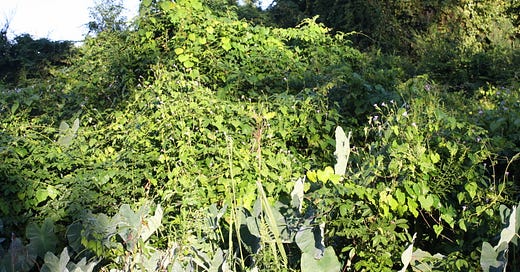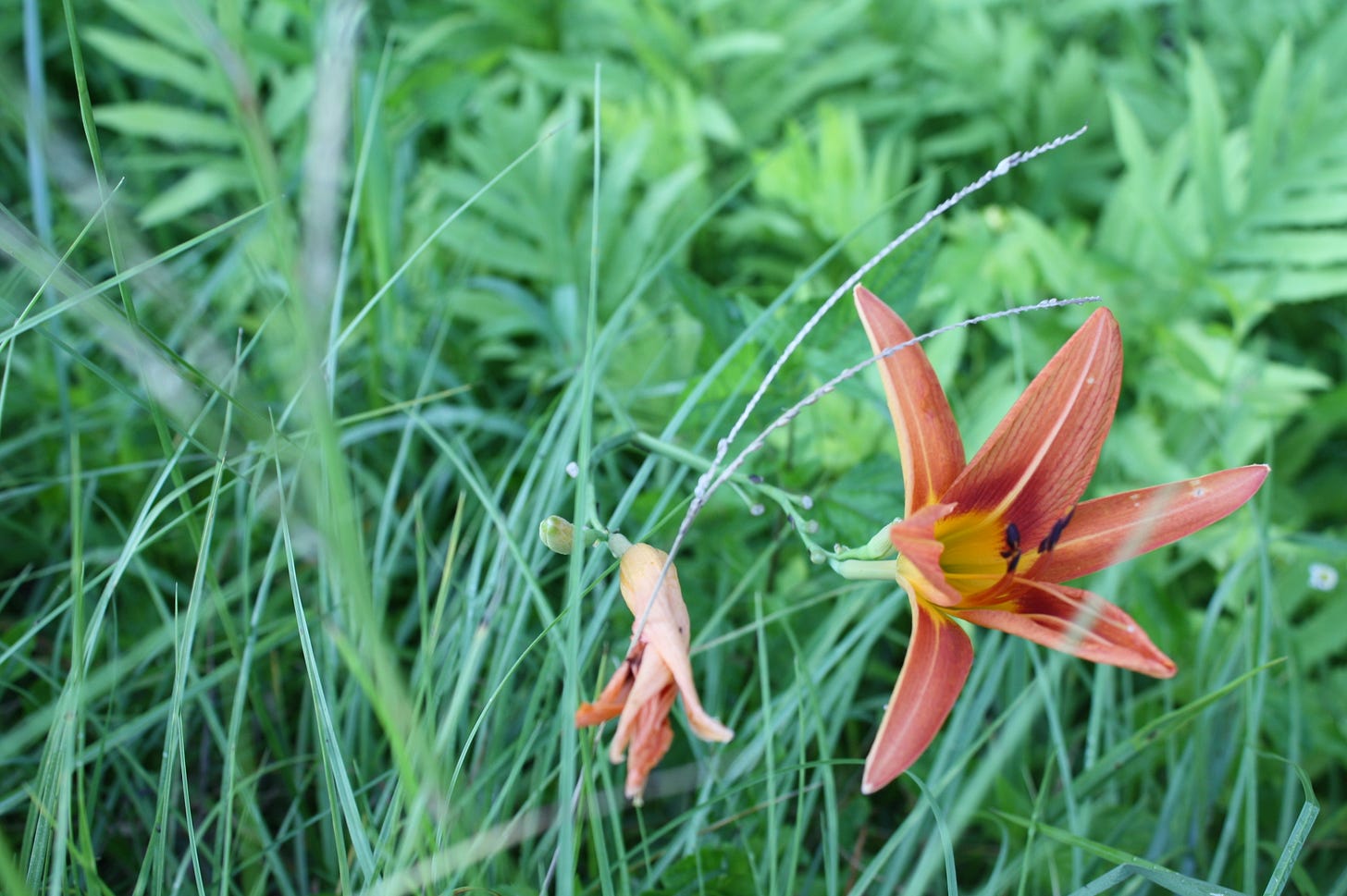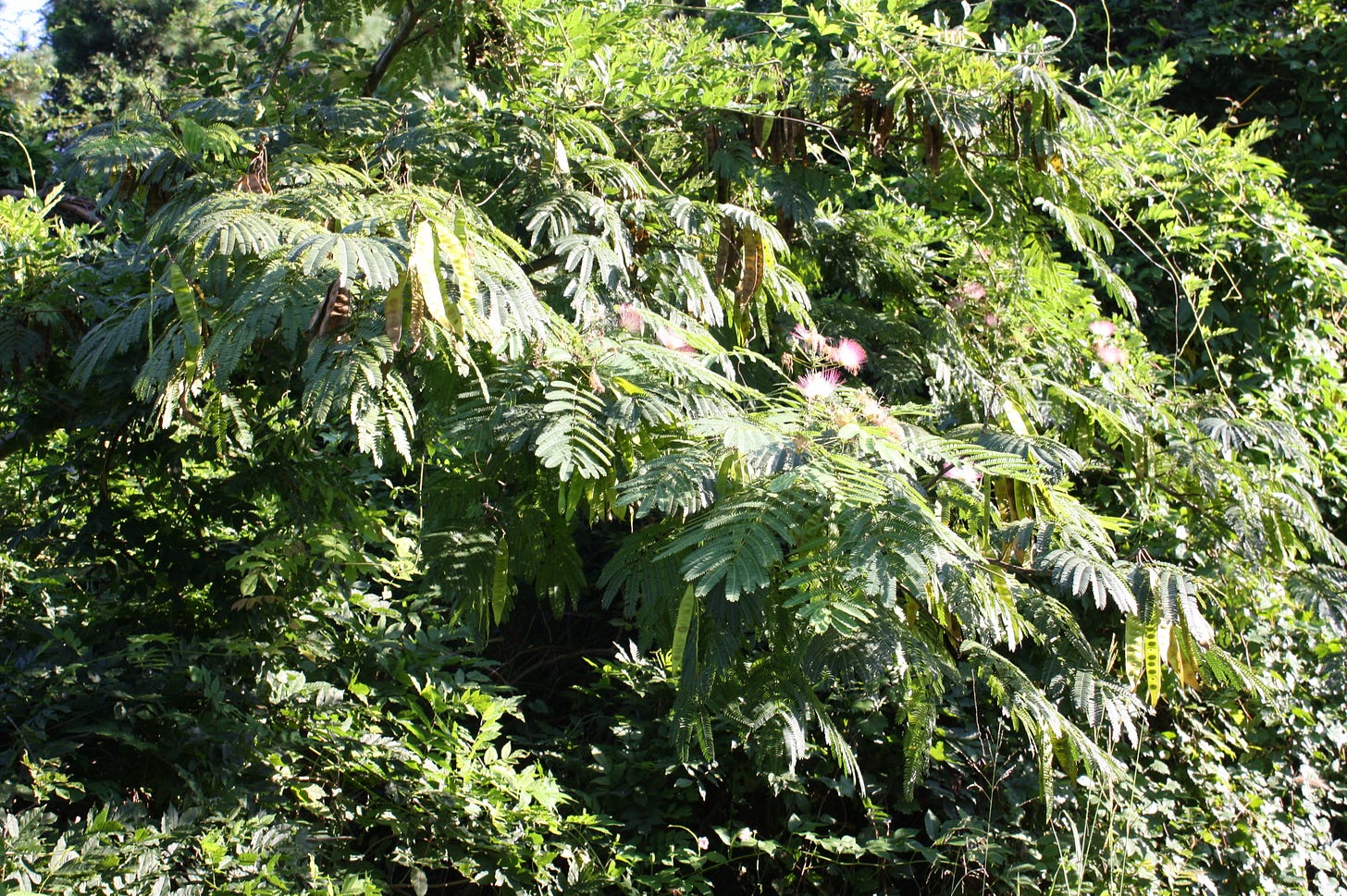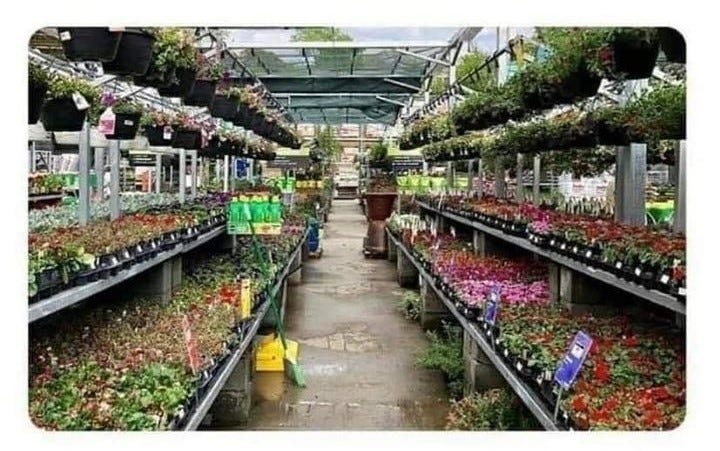Last week, I brought up the subject of the types of plants we want to avoid having in our yards and gardens: aggressive native plants and invasive plants.
As a refresher, introduced or non-native plants do not provide food or shelter for neighboring wildlife. Some of these exotic species are invasive plants that spread, killing off all the native plants the local insects, birds, and other critters depend on to thrive and survive.
On the other hand, aggressive plants are native, and even though they provide food and shelter for native insects, they still run rampant and choke out other indigenous plants.
Native plants and animals evolved in a symbiotic relationship where one needs the other to maintain nature's balance. It's incredible how flowers, trees, and shrubs are triggered to start producing leaves just as insects are beginning to hatch, eager to munch on the new growth. Meanwhile, birds are looking for those fat, juicy caterpillars to feed their babies, and mammals are on the prowl for food as well. When invasive plants fill the landscape, they interrupt the cycle, throwing Mother Nature's finely tuned plan into chaos.
These habitat snatchers are a bugger to get rid of, too. Once established, the new growth spreads like wildfire. The South Carolina Native Plant Society states that invasive weeds are the second greatest threat to biodiversity and ecosystems after human-caused habitat destruction. "By reducing plant diversity, invasive species reduce the overall diversity of the ecosystem, and as many of us learned in school, diversity equals stability."
How Did We Get So Many Invasive Plants?
From the first immigrants who settled in what was to become the United States until now, non-native plants and grasses have been introduced and allowed to grow rampant from the east coast westward.
Some well-meaning soul thought Camellias would look lovely in American yards. The same goes with Taro (Elephant ear), Silk Trees (Mimosa), Pampas grass, Nandinas, Crepe Myrtles, and Daylilies.
Ecowatch lists ten of the most invasive species in the U.S. as:
1. Bamboo
2. English Ivy
3. Callery or Bradford Pear Trees
4. Wisteria Sinensis
5. Cogongrass
6. Purple Loosestrife
7. Japanese Honeysuckle
8. Winged Burning Bush
9. Norway Maple
10. Barberry
We can also add Kudzu, Butterfly bush, Black locust, Japanese knotwood, Common buckthorn, Dame's rocket, and Giant hogweed to the list. However, that's only the tip of the iceberg. There are thousands of species of invasives across the country.
What Are the Impacts of Invasive Plant Species?
The U.S. government estimates the cost from invasives to be $120 billion, with more than 100 million acres affected, an area about the size of California. The Forestry Service reports that the establishment and spread of invasives:
· Have contributed to the decline of 42% of U.S. endangered and threatened species. For 18% of U.S. endangered or threatened species, invasives are the main cause of their decline.
Compete directly with native species for moisture, sunlight, nutrients, and space.
Decrease overall plant diversity.
Can degrade wildlife habitat.
Results in poor quality agricultural lands.
Degrades water quality.
Increases soil erosion.
Decreases recreation opportunities.
Are All Non-Native Plants Invasive?
NO! There's a big difference between non-native and invasive. Non-native simply means the plant was introduced to an area. The plant could have originated in a different region of the U.S. or be from Europe or Asia, but a non-native does not pose a threat to native plants. They may not support the local ecosystem's health as well as native plants do, such as dandelions and clover, but they do no harm. Other non-native species include petunias, hyacinths, zinnias, and many food crops such as rice, wheat, and tomatoes.
Even though the disastrous effects of invasives on the landscape are well known today, the importation and sale of these plants are still taking place. These habitat invaders do more harm than good, folks. So, please check out any plants you want to buy before you go to the big box store.
As a matter of fact, avoid the big stores that import non-native plants treated with nasty, poisonous pesticides. (More on that in an upcoming article.)
Shop local nurseries instead. Even then, ask if the plants are native and confirm they have not been treated with any insecticides, herbicides, or fungicides. Research before you buy!
How To Know What's Invasive?
To know if a plant is native, non-native, or invasive, ask local experts. Pick the brain of someone from a WildOnes Chapter or your state's native plant society. In addition, check out state and county resources, university extension offices, master gardeners, clubs, and conservation organizations.
You can find information online, too.
https://xerces.org/pollinator-conservation/pollinator-friendly-plant-lists
https://www.audubon.org/native-plants
https://www.nwf.org/nativeplantfinder/plants
https://www.nwf.org/Garden-for-Wildlife/About/Native-Plants/keystone-plants-by-ecoregion
Play it safe. Before putting an exotic in your garden, try to find a native alternative, i.e., Rudbeckia instead of zinnias. (More on that in an upcoming article.)
Consider a plant's potential for getting away from you. Certain herbs are better placed in a confined area where they cannot escape.
Do your homework and know what you're getting into before you go shopping. It may take time, but it's better to be safe than sorry.
Happy Gardening, everyone!
~~~~~~~~~~~~~~~~~~~~~~~~~~~~~~
Dear Reader,
I'd be ever so grateful if you would take a few minutes to recommend Let's Get Our Hands Dirty to your followers on Substack and other social media platforms.
Thank you!
Greta
Let's Get Our Hands Dirty is a reader-supported publication. This post is free as are all my posts. Please subscribe so you can receive notification when new articles are published. I'd love for you to become a part of our nature-loving family. Basic subscriptions are free, but if you sign up for a paid subscription as a love offering, that would be wonderful and greatly appreciated!
Have a fabulous day,
Greta
Please use the buttons below to Like, Comment, Restack, and Share my post on Substack and other social media platforms.
THANK YOU SO MUCH!










